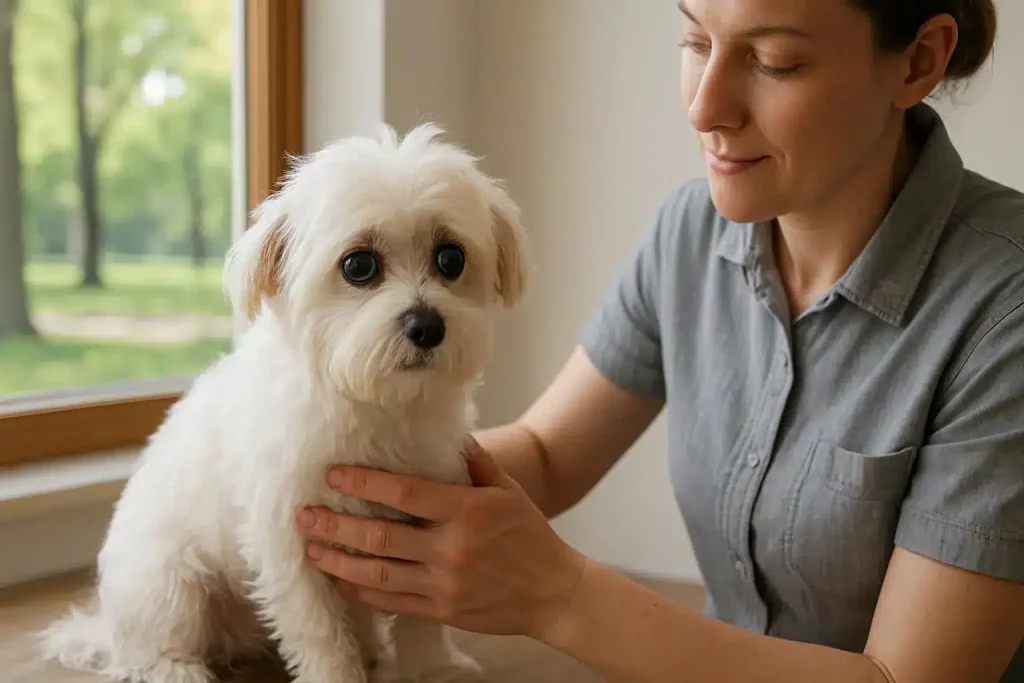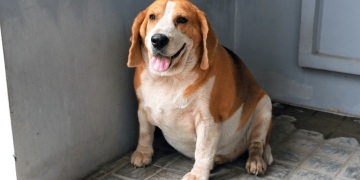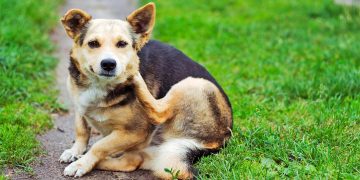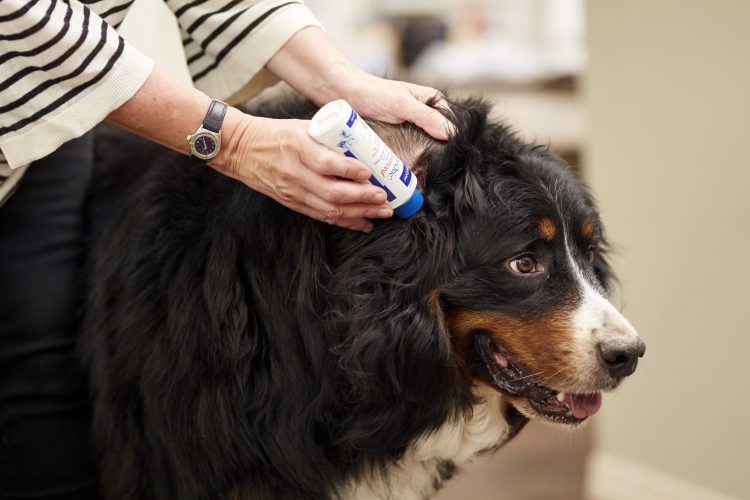Your dog’s ears might not be the first thing you think about during grooming time, but overlooking ear hygiene can lead to a range of problems—some irritating, some painful, and some serious enough to require veterinary intervention. From chronic infections to hearing loss, ear issues are more common than most pet owners realize, especially in breeds with floppy ears or lots of fur. The good news is that ear maintenance doesn’t need to be complicated. With a solid understanding of your dog’s specific needs and a consistent routine, you can prevent most problems long before they start. In 2025, with rising awareness of preventative pet care and at-home wellness routines, cleaning your dog’s ears has become less about emergency fixes and more about regular, proactive hygiene. So, how often should you really clean your dog’s ears—and what’s the safest way to do it?
Why Ear Hygiene Matters More Than You Think
A dog’s ear canal is shaped differently from a human’s—it’s L-shaped, which means debris, moisture, and wax can get trapped more easily. When this happens, bacteria or yeast have the perfect environment to grow, especially in warm or humid climates. Dogs that swim regularly, those with allergies, or breeds with pendulous ears like Cocker Spaniels, Basset Hounds, or Golden Retrievers are particularly prone to ear infections.
Neglecting your dog’s ears can result in:
- Otitis externa (outer ear infection)
- Chronic inflammation or thickening of the ear canal
- Pain, head shaking, and balance issues
- Foul odor or discharge
- Hearing damage in severe cases
In contrast, dogs with well-maintained ears are far less likely to suffer from infection, require medication, or endure uncomfortable vet visits. Ear cleaning also allows owners to inspect the ears regularly for early signs of trouble, giving them a chance to act before a minor issue turns serious.
How Often Should You Clean Your Dog’s Ears?
There is no one-size-fits-all answer, because cleaning frequency depends on multiple factors:
- Breed and ear shape: Dogs with large, hanging ears need more frequent cleaning than those with upright ears, as air flow is limited and moisture lingers.
- Activity level: Dogs that swim, roll in dirt, or play outside frequently may need weekly ear cleaning.
- Allergies: Dogs with food or environmental allergies may produce more ear wax and need cleaning every few days.
- Ear health history: Dogs prone to infections or ear mites will benefit from routine cleanings to prevent recurrence.
- Coat type: Breeds with hair growing inside the ear canal (like Poodles or Shih Tzus) can trap wax and debris, needing more regular care.
As a general guideline:
- Weekly cleaning for dogs prone to ear problems or those who swim often.
- Every 2–3 weeks for most medium to long-eared dogs.
- Once a month for short-haired dogs with upright ears and no ear health history.
- Only as needed for dogs with dry, clean ears and no discharge, odor, or redness.
You should never clean your dog’s ears daily, as over-cleaning can strip natural oils and lead to irritation. It’s about balance—not neglect, but not obsession either.
Signs That Your Dog’s Ears Need Cleaning
Even if you follow a general schedule, it’s wise to monitor your dog for signs that a cleaning is due. These include:
- Head shaking or ear scratching
- Visible wax buildup
- Unpleasant odor from the ears
- Redness, swelling, or warmth around the ear flap
- A dog pulling away when the ears are touched
It’s also important to differentiate between normal ear wax and signs of infection. Normal wax is light brown, slightly sticky, and doesn’t smell offensive. Signs of a problem include dark brown or black discharge, pus-like fluid, crusting, or a yeasty, sour smell. If you see these symptoms, skip the cleaning and call your vet—cleaning infected ears can make things worse.
Safe Home Cleaning Methods That Actually Work
Cleaning your dog’s ears at home isn’t difficult, but it must be done gently and correctly to avoid damaging the sensitive structures inside the ear canal. Here’s a step-by-step method recommended by most veterinarians:
- Gather your tools: You’ll need a dog-safe ear cleaning solution (never use hydrogen peroxide or alcohol), cotton balls or gauze, and treats to reward calm behavior. Avoid using cotton swabs inside the ear canal, as these can push debris deeper or cause trauma.
- Inspect the ears first: Look for redness, discharge, or swelling. If any signs of infection are present, stop and consult your vet.
- Apply the solution: Lift your dog’s ear flap and gently squeeze a generous amount of cleaner into the ear canal. Do not insert the tip too deeply.
- Massage the base of the ear: Gently rub the ear for 30–60 seconds to loosen debris. You should hear a squishing sound.
- Let your dog shake it out: Step back and let them do a natural head shake. This helps dislodge debris from deeper inside the ear.
- Wipe away residue: Use a cotton ball or soft cloth to gently clean the outer ear and any fluid that has come out. Do not go deep into the canal.
- Praise and treat: Make the process positive so your dog associates ear cleaning with calm rewards, not punishment or fear.
For dogs with long ears, be sure to dry the ear canal afterward with a fresh cotton pad to reduce lingering moisture, especially after swimming or baths.
What Kind of Cleaners Are Safe?
Choose a veterinarian-recommended ear cleaner that contains gentle surfactants and drying agents to break down wax and moisture. Some popular ingredients include lactic acid, salicylic acid, and aloe vera for soothing effects.
Avoid:
- Alcohol-based cleaners (drying and irritating)
- Apple cider vinegar (often too acidic)
- Homemade oils unless approved by a vet

In 2025, many pet brands now offer advanced ear cleaners with probiotics or anti-fungal properties, which are especially helpful for dogs prone to chronic infections.
Understanding Breed-Specific Ear Challenges
Some breeds are simply more prone to ear issues and need customized care:
- Cocker Spaniels and Basset Hounds have heavy, pendulous ears that trap heat and moisture.
- Labrador Retrievers and Golden Retrievers are frequent swimmers, increasing yeast infection risk.
- French Bulldogs and Boston Terriers often have narrow ear canals, requiring regular inspection.
- Poodles and Schnauzers grow hair inside the ears that may need to be trimmed or plucked to maintain airflow.
For these breeds, regular inspection is just as important as cleaning. Never clean aggressively—gentle, routine hygiene will yield better long-term results.
When to See a Vet Instead of Cleaning at Home
While most dogs tolerate and benefit from routine ear cleaning, there are situations that call for a professional:
- Persistent ear scratching or head shaking even after cleaning
- Bad odor that doesn’t go away
- Discharge that is yellow, black, or bloody
- Pain when the ear is touched
- Swelling of the ear flap (possible hematoma)
- Balance problems or tilting of the head
These signs may indicate a deeper issue such as a bacterial or yeast infection, mites, or even foreign objects lodged in the ear. Attempting to clean at home under these conditions can worsen inflammation or delay treatment.
Your vet may perform a thorough ear flush, prescribe medicated drops, or take swabs to identify the root cause.
Training Your Dog to Accept Ear Cleaning
Not all dogs love ear cleaning—and some downright hate it. But training your pet to accept the routine is possible with patience and consistency:
- Start by handling your dog’s ears during non-cleaning times so they get used to the sensation.
- Associate ear touch with calm praise, treats, or massage.
- Begin by cleaning just one ear per session if your dog is anxious.
- Gradually increase the duration and intensity over time.
- Keep your tone calm and your actions slow.
Some owners find success by pairing ear cleaning with nail trimming or other grooming routines so it becomes part of a wellness habit. Just like brushing teeth or combing fur, ear care can become second nature with the right approach.
Final Thoughts: Healthy Ears Mean a Happier Dog
A dog’s ears are more than just soft flaps to scratch behind—they’re gateways to health, comfort, and communication. Clean ears allow your dog to hear clearly, stay comfortable during play, and avoid the misery of chronic infections. By committing to a cleaning schedule that matches your dog’s lifestyle, using gentle vet-approved solutions, and learning to spot trouble early, you’re not just caring for hygiene—you’re preventing pain, saving vet costs, and deepening the trust between you and your pet. Clean ears don’t just look good—they feel good too.























































